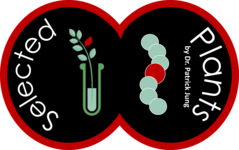Kurzfassung
The overarching goal of this proposal “GRIT LIFE” is to understand the to date unknown ecology and distribution of the novel grit crust in the National Park Pan de Azúcar (Atacama, Chile) which is supposed to be the result of unique abiotic and biotic interaction dynamics. Within an interdisciplinary consortium central hypotheses shall be tested regarding a) taxonomic composition and microclimate, b) recolonization, and c) contribution to carbon cycle. To achieve this, modern sensing...The overarching goal of this proposal “GRIT LIFE” is to understand the to date unknown ecology and distribution of the novel grit crust in the National Park Pan de Azúcar (Atacama, Chile) which is supposed to be the result of unique abiotic and biotic interaction dynamics. Within an interdisciplinary consortium central hypotheses shall be tested regarding a) taxonomic composition and microclimate, b) recolonization, and c) contribution to carbon cycle. To achieve this, modern sensing technologies will be combined with field sampling and eco-physiological measuring to train machine learning statistical models. Those models will then be applied to remotely sensed data to provide spatially explicit estimations of ecosystem services provided by the novel grit crust.
Specifically, in the the taxonomic composition including the role of parasitic fungi and the recovery of the grit crust community will be studied during a recolonization experiment. This approach will test a) how and if the community compositions of the grit crust are affected by micro-climate, b) if the blackish and whitish pattern is the consequence of abiotic (climatic) or biotic (parasitic fungi) effects and finally c) how the organismic community reacts during a recolonization experiment.
» weiterlesen» einklappen


